Waterproof flooring can be an excellent asset for any home or business. It provides an extra layer of protection against moisture and liquid damage, making it ideal for kitchens, bathrooms, basements, and laundry rooms.
Whether you’re dealing with wet weather or spills, waterproof flooring is essential for any home. A poorly sealed room can suffer from costly water damage, so choosing the right type of flooring is essential. From vinyl and laminate to tile, there are various options.
Here, we’ll discuss the different types of waterproof flooring and their pros and cons, so you can make an informed decision that’s right for you.
Table of Contents
Best Waterproof Flooring Options
Recently, there has been a rise in the demand for water-resistant flooring options due to their ability to resist water damage. Various types of waterproof floors are becoming increasingly popular, including vinyl, laminate, and tile.
Let’s take a closer look at each one.
1. Waterproof Vinyl Flooring
Vinyl is a great choice for waterproof flooring. It’s low-maintenance, affordable, and easy to install. Vinyl floors are also highly durable, lasting for years and resisting scratches and dents. Plus, you can get vinyl in various colors, designs, and textures, so it’s easy to find something that fits your style.
Regarding waterproofing, there are two main types of vinyl flooring: Luxury Vinyl Tile (LVT) and Luxury Vinyl Plank (LVP).
- LVT
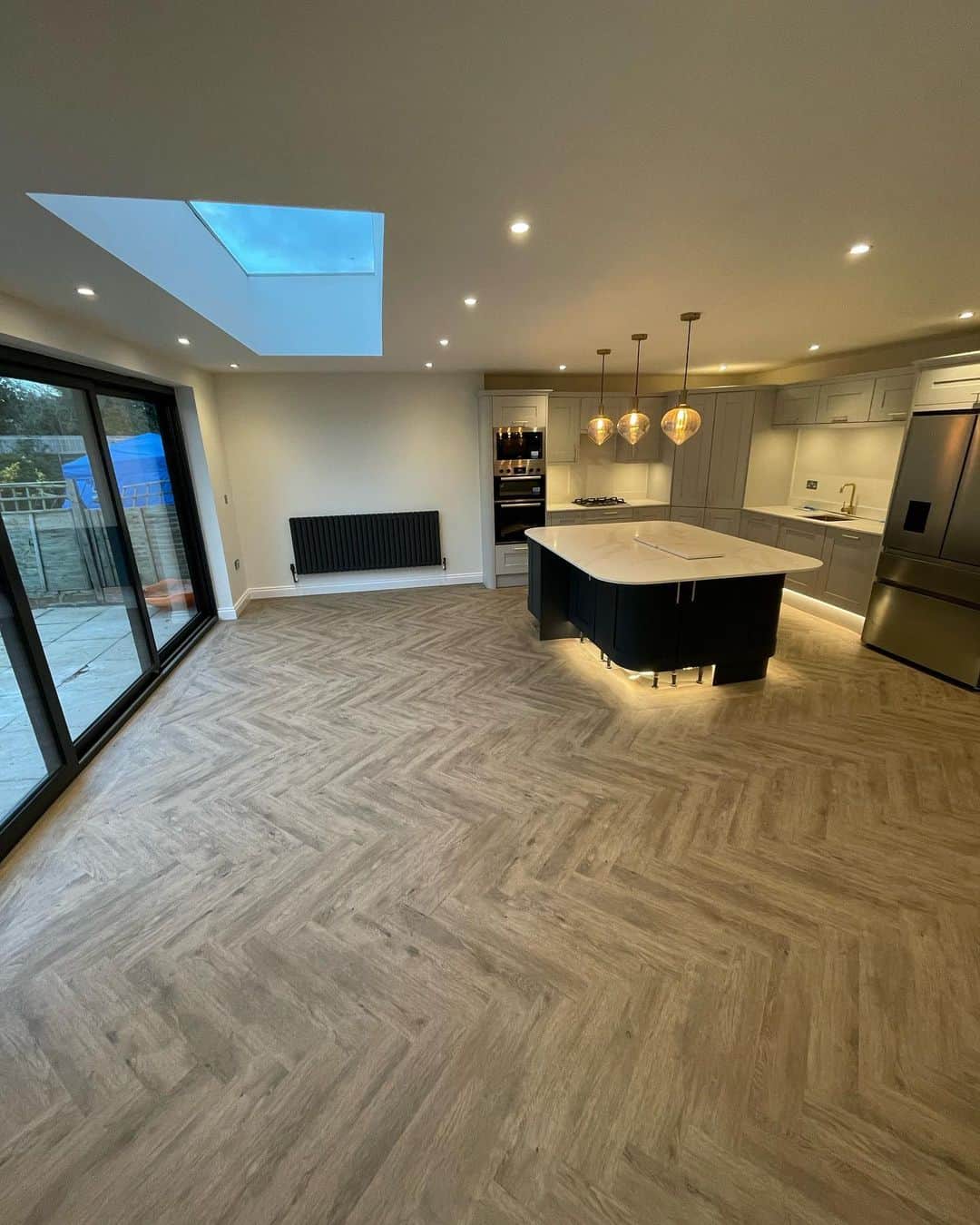
Luxury Vinyl Tile (LVT) is a type of vinyl flooring made with multiple layers, including a wear-resistant top layer. It looks like a natural tile or stone and can be installed with minimal effort. It’s also incredibly water-resistant, making it an ideal choice for rooms that may get wet occasionally.
- LVP
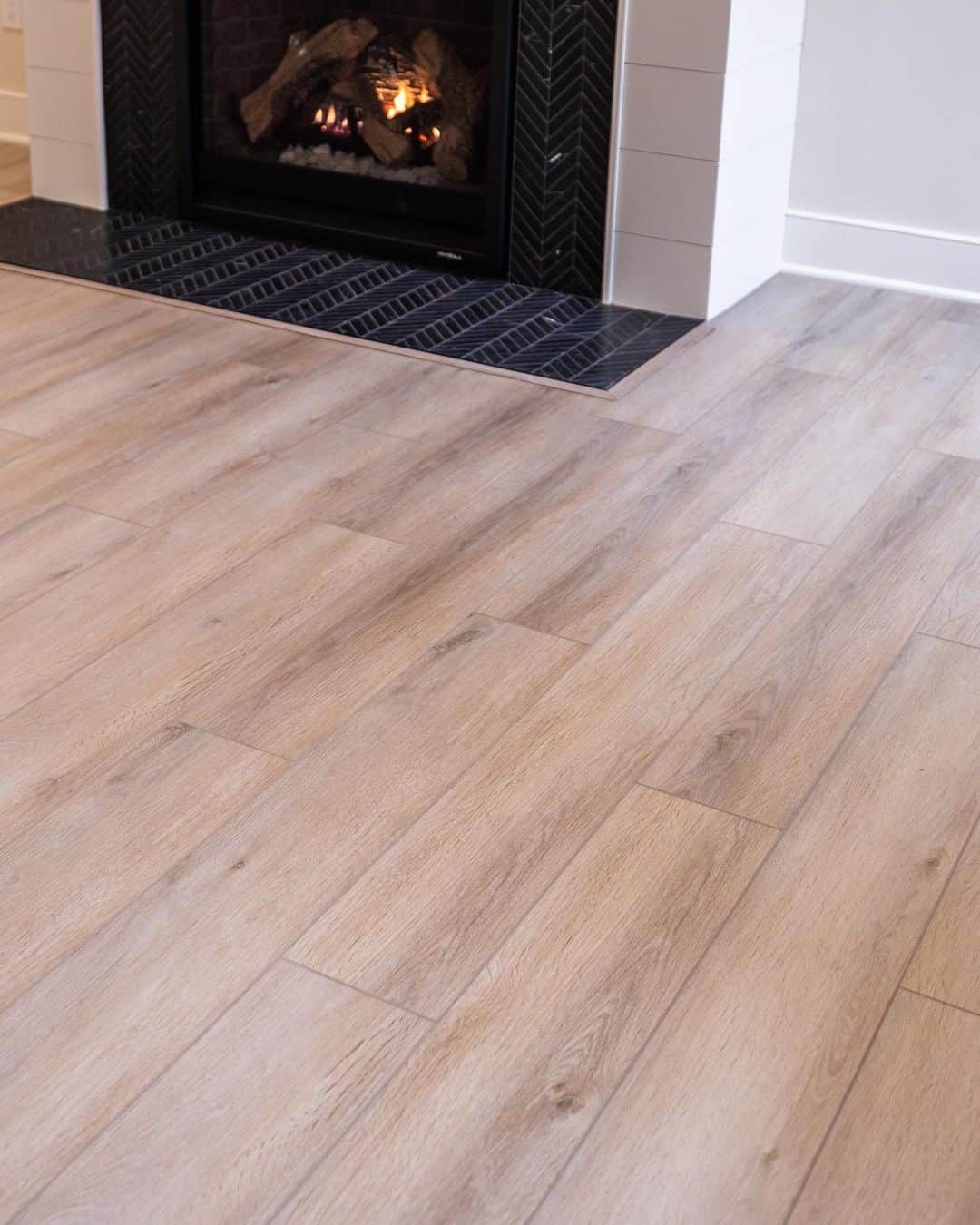
Luxury Vinyl Plank (LVP) is similar to luxury vinyl tile but is made with a thicker and more durable top layer. It is typically thicker than traditional vinyl and can be installed in high-traffic areas of a home.
LVP provides excellent sound absorption and thermal insulation as a waterproof flooring option. It is available in various colors, styles, and finishes to suit any home’s décor. Because of its durability and resistance to water, the luxury vinyl plank can last up to 30 years with proper care.
2. Waterproof Laminate Flooring
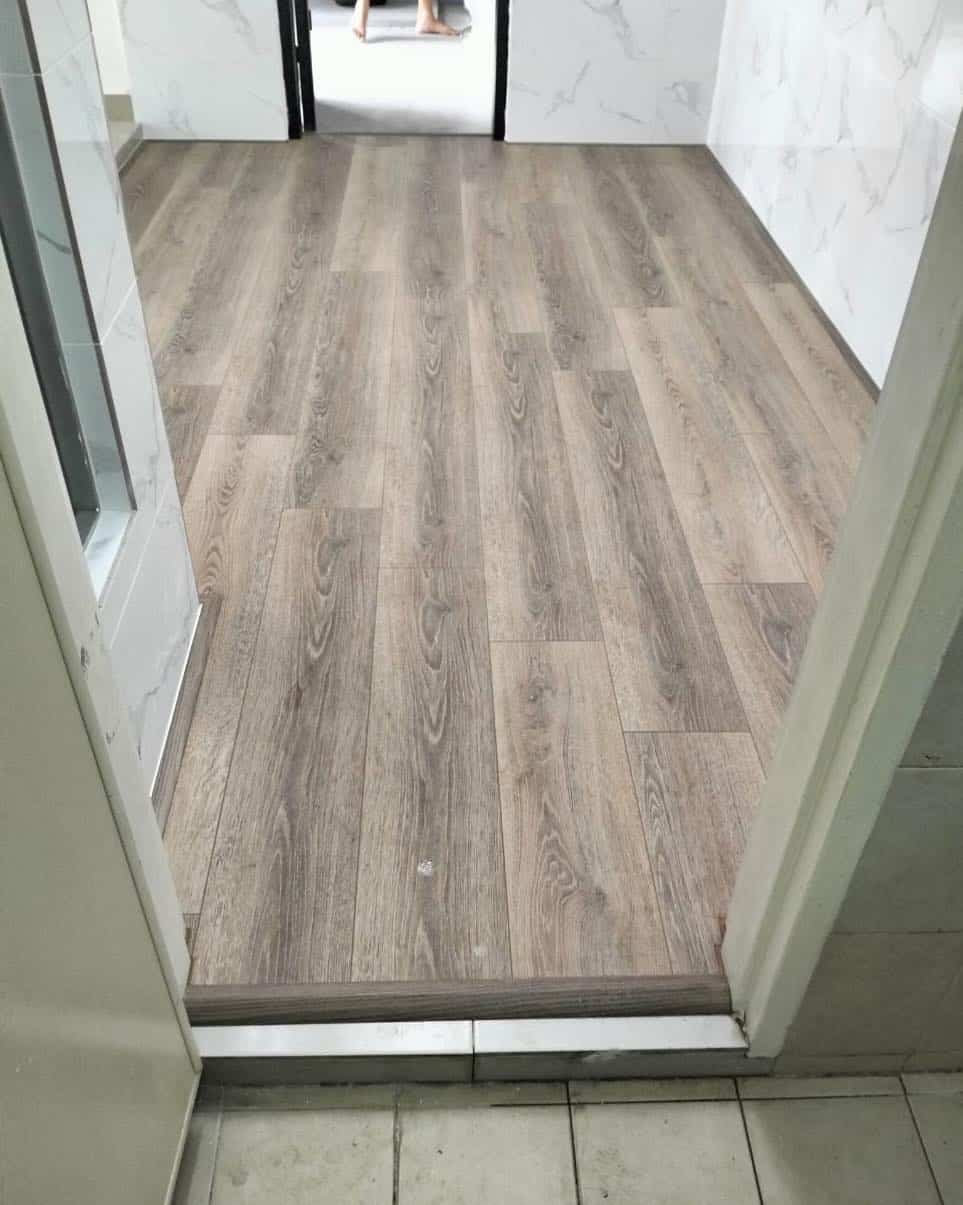
Water-resistant laminate floors are composed of several layers fused together to form a flooring material that is durable and highly resistant to water.
It’s made from a combination of materials, including a wear layer, core layer, and backing.
The wear layer is usually composed of melamine resins that form a protective coating that prevents water from seeping into the core layer. The core layer is made of high-density fiberboard, which provides a strong and stable base for the flooring. Finally, the backing is composed of a material that helps keep the laminate from warping or expanding due to its contact with water.
Laminate flooring is an attractive choice for those looking for a waterproof option that’s also highly durable and easy to install. It’s available in many styles and colors, so you can find something to fit your home perfectly.
Additionally, laminate is relatively inexpensive compared to other types of flooring, making it an excellent option for those on a budget.
3. Tile
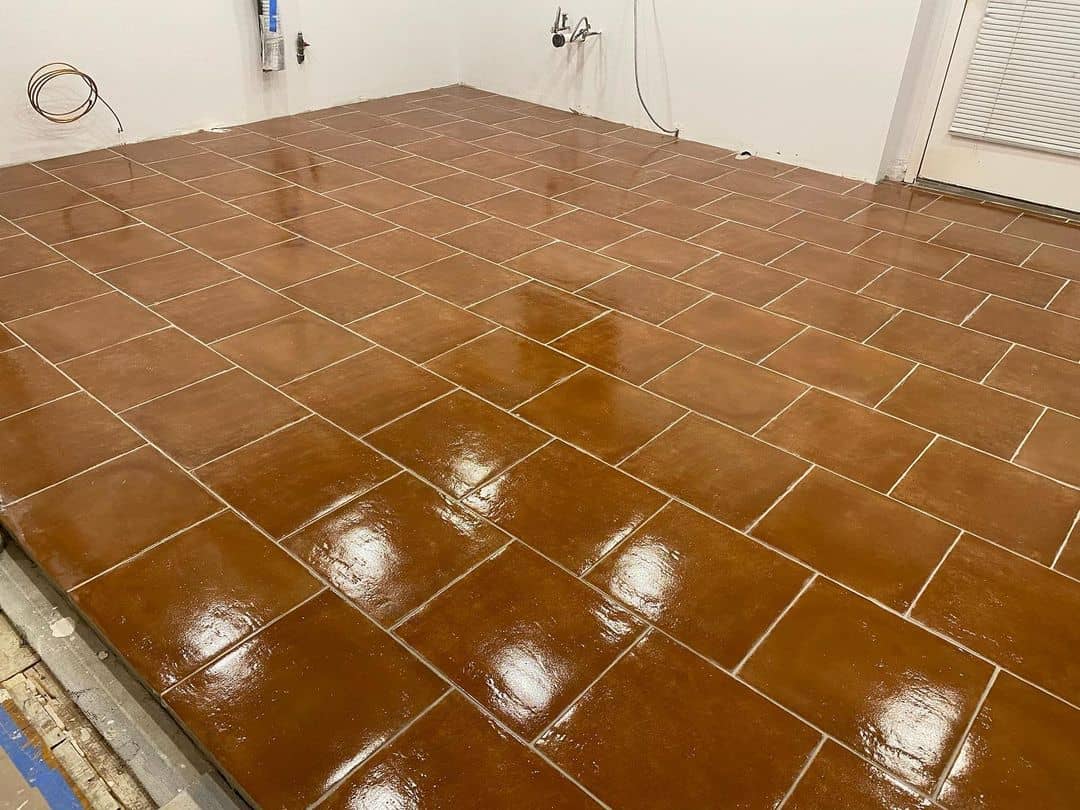
Tile is a classic and timeless choice and can be used in any room of the house, from bathrooms to kitchens to living rooms. Tile is made from various materials, such as ceramic tile, porcelain tile, and natural stone.
It is available in a range of colors, textures, and styles. While the tile is waterproof, it should be sealed to ensure no water or moisture seeps into the grout lines.
One advantage of tile flooring is that it’s easy to clean and maintain. It is also highly enduring and can last for years with proper maintenance. Tile is relatively affordable and comes in various colors and designs.
4. PVC Flooring
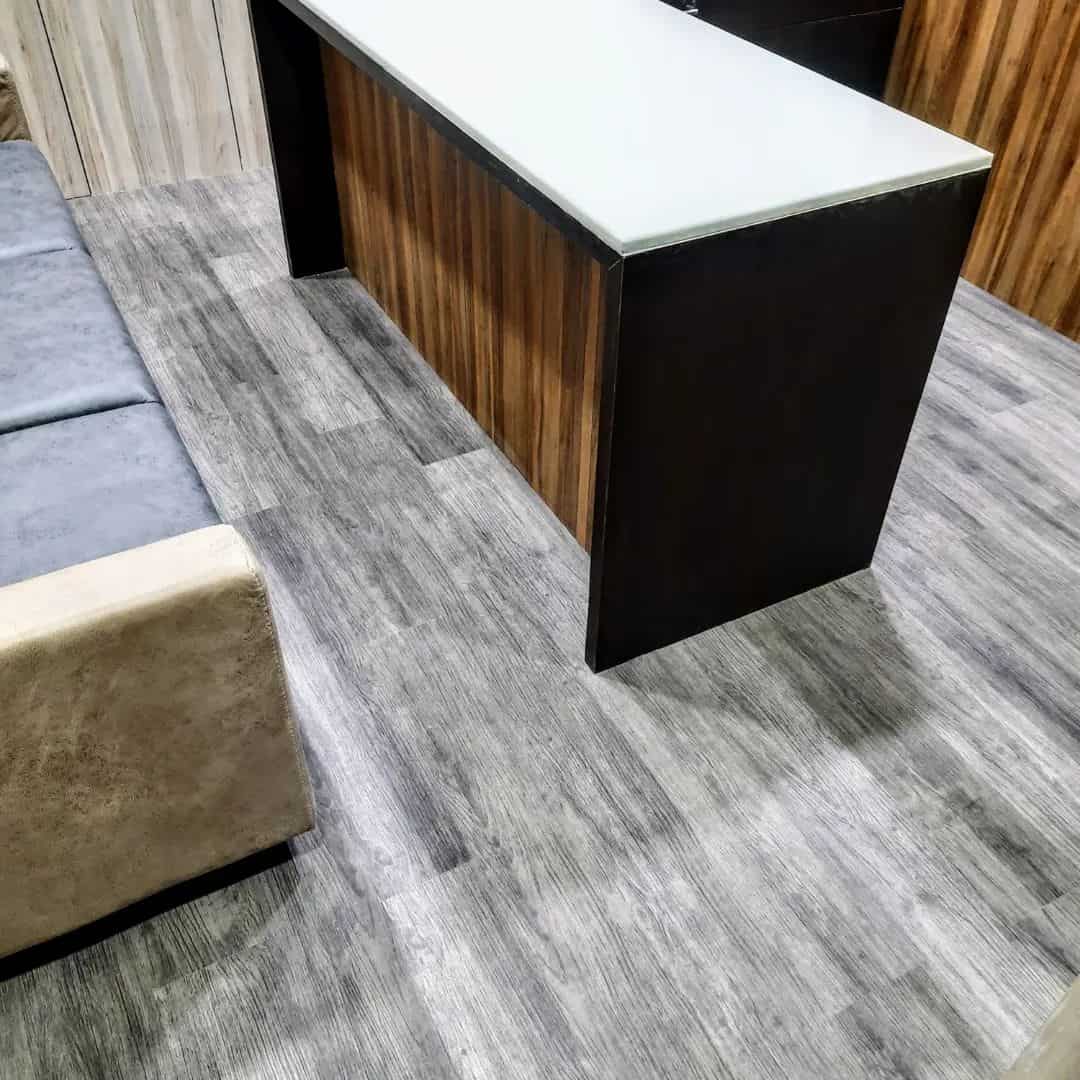
PVC Flooring is a type of waterproof flooring that combines the durability and wear-resistance of sheet vinyl with the look and feel of hardwood floors. PVC flooring is often used in areas with high moisture levels, such as bathrooms, kitchens, and wet rooms, as it is completely waterproof and easy to maintain. PVC flooring offers a luxurious, comfortable finish that can be installed in both residential and commercial settings.
PVC flooring has several advantages over other types of waterproof flooring. It is generally less expensive than hardwood or stone and is available in various finishes that mimic the look of natural materials.
PVC flooring is also highly durable, making it ideal for high-traffic areas such as lobbies and corridors. You’ll find it easy to clean and maintain, and it’s resistant to stains and spills.
Benefits of Waterproof Flooring
Waterproof flooring offers a range of benefits, including:
1. Durability and strength
Waterproof floors are designed to withstand long-term wear and tear and can last for years without needing replacement.
2. Scuff and stain resistance
Waterproof floors are highly resistant to scuff marks and stains, requiring less frequent cleaning and upkeep.
3. Easy to clean
Spills can be easily wiped from waterproof flooring – ideal for busy households or businesses.
4. Design flexibility
Unlike some traditional types of flooring with limited design options, waterproof flooring comes in various colors, textures, and styles to suit any decorating preference.
5. Pet-friendly option
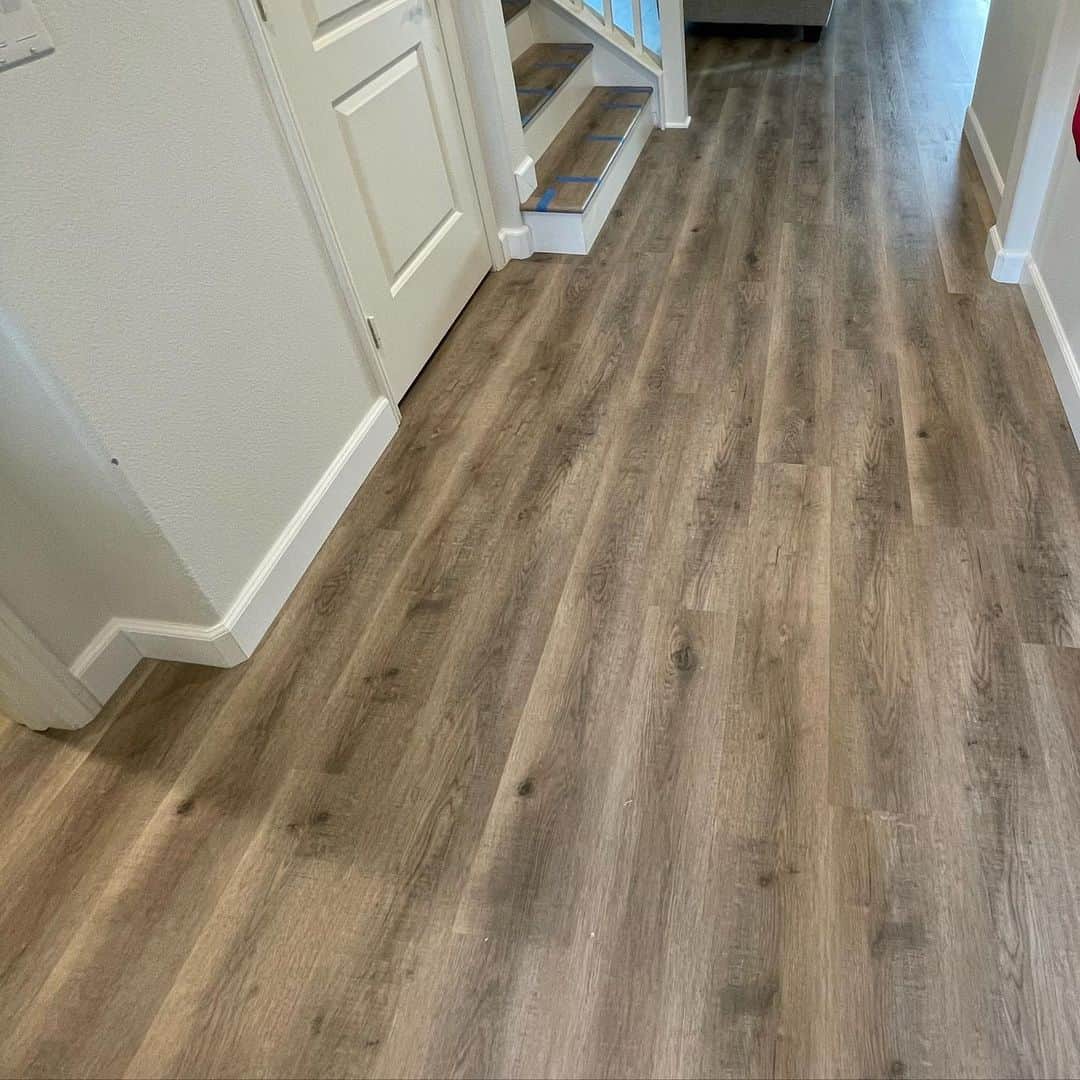
Many pets enjoy spending time indoors, which can cause issues with non-waterproof flooring materials due to moisture and fur buildup. Waterproof floors make it much easier to keep pets out of the mess.
6. Cost efficiency
Waterproof floors offer excellent value for money, as they don’t need regular repairs or replacements due to moisture damage.
7. Good insulation properties
With good insulation qualities, these types of flooring keep rooms warm in winter and cool in summer, thereby reducing energy bills.
Tips for Maintaining Waterproof Flooring
Waterproof flooring is designed to be easy to maintain and clean, but here are some tips for keeping it in tip-top condition:
1. Regular Mopping
One of the simplest ways to maintain your waterproof flooring is by mopping it regularly. Use a damp mop and mild cleaner to keep dust, dirt, and debris from building up. When more intense cleanings are needed, use a slightly stronger cleaner or follow the instructions on the adhesive packaging.
2. Remove Stains Immediately
If you have spills, food, or other messes, clean them up immediately. Most waterproof flooring is designed to withstand water spills and other common substances, but the more you let them sit, the more difficult they will be to clean up.
3. Avoid Abrasive Cleaners
Avoid using abrasive cleaners when cleaning your waterproof flooring, as they can damage the finish. When scrubbing, use a soft bristle brush and a mild cleaner.
4. Use Mats
Using mats both inside and outside your home can be a great way to protect your floors from water damage. Mats are instrumental in providing an extra layer of defense, especially in high-traffic areas, so you don’t want to worry about cleaning up spills and messes.
5. Consider a Protective Sealant
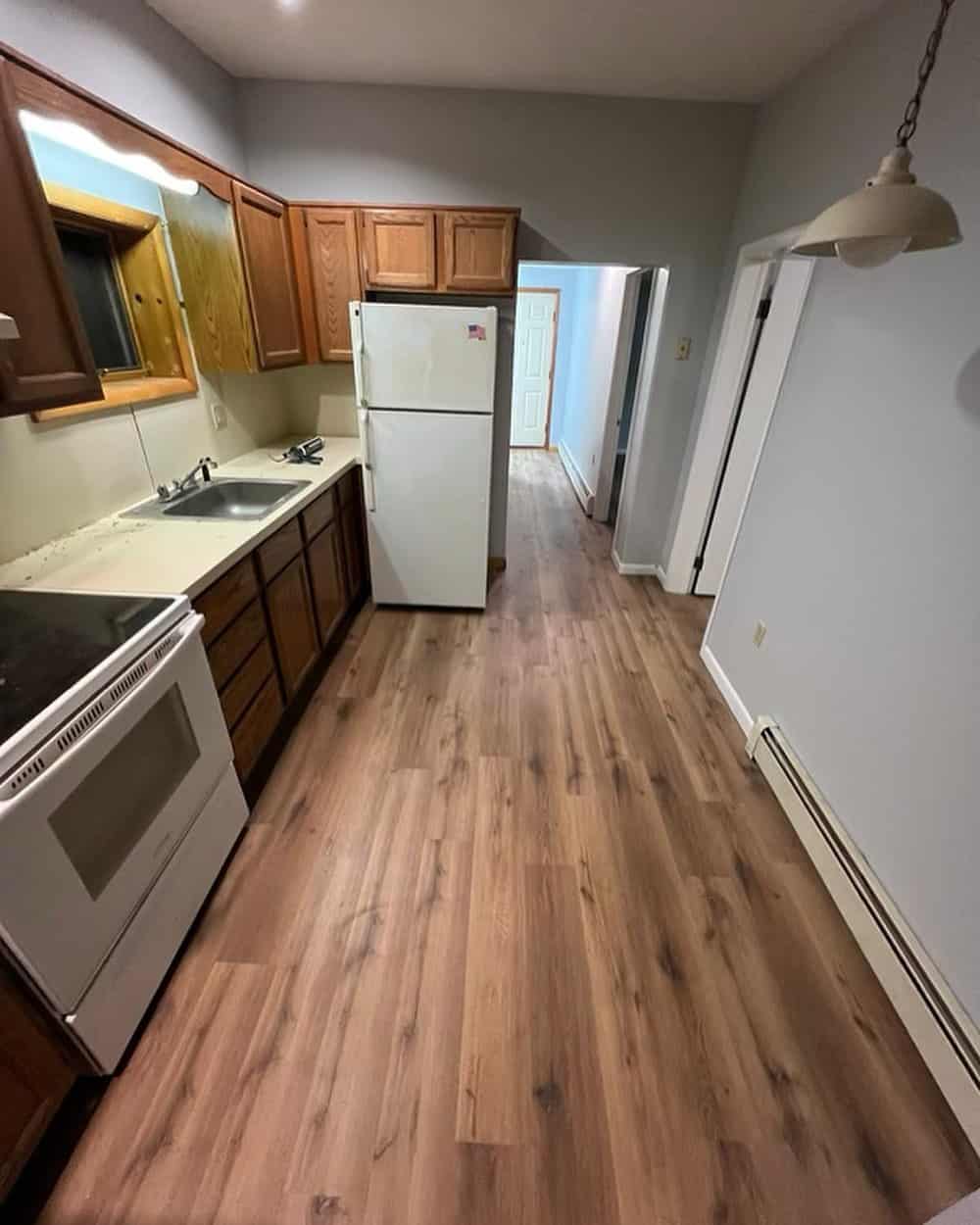
If you’re looking for an extra layer of protection against water damage, consider applying a protective sealant. This will help guard against staining and discoloration and extend the life of your waterproof flooring.
6. Keep Pets’ Nails Trimmed
If you have pets, be sure to keep their nails properly trimmed. Pets can scratch and damage waterproof flooring if their claws are too long.
With these tips in mind, you can keep your waterproof flooring looking new for years to come.
Tips for Installing Waterproof Flooring
Installing waterproof flooring is not necessarily tricky, but it does require some special considerations and precautions to ensure a successful outcome.
- The type of flooring and the subfloor it’s being installed on will determine how you install it. Generally, hiring a professional flooring installer is best, but if you’re confident, you can DIY, too.
- If you’re installing waterproof flooring over concrete, be sure to clean and prepare the surface thoroughly. Before proceeding, any bumps, cracks, or unevenness must be filled in with a leveling compound.
- When installing waterproof vinyl or laminate flooring, read any manufacturer’s instructions. The subfloor must also be clean and dry before installation.
- Particular adhesive products are also recommended to ensure that the adhesive is completely waterproof. For adhesive-based flooring, you’ll need to ensure the adhesive is applied correctly and allow ample time to cure.
- For non-adhesive-based flooring, use transition strips to connect different sections of the flooring. For tile floors, the primary consideration is to seal the grout lines properly to prevent water from seeping in.
- Finally, remember that waterproof flooring is also vulnerable to water damage. Therefore, cleaning up any liquid spills or moisture buildup is essential to prevent damage.
Final Thoughts
Waterproof flooring is a superb choice for an easy-to-maintain and durable material. With a suitable adhesive, sealant, and regular cleaning, you can keep your waterproof flooring looking new for a long time. Its easy maintenance makes it an excellent option for those looking to save time and money on flooring maintenance.
Which type of waterproof flooring do you think is best for your home? Share your thoughts with us in the comments section below!